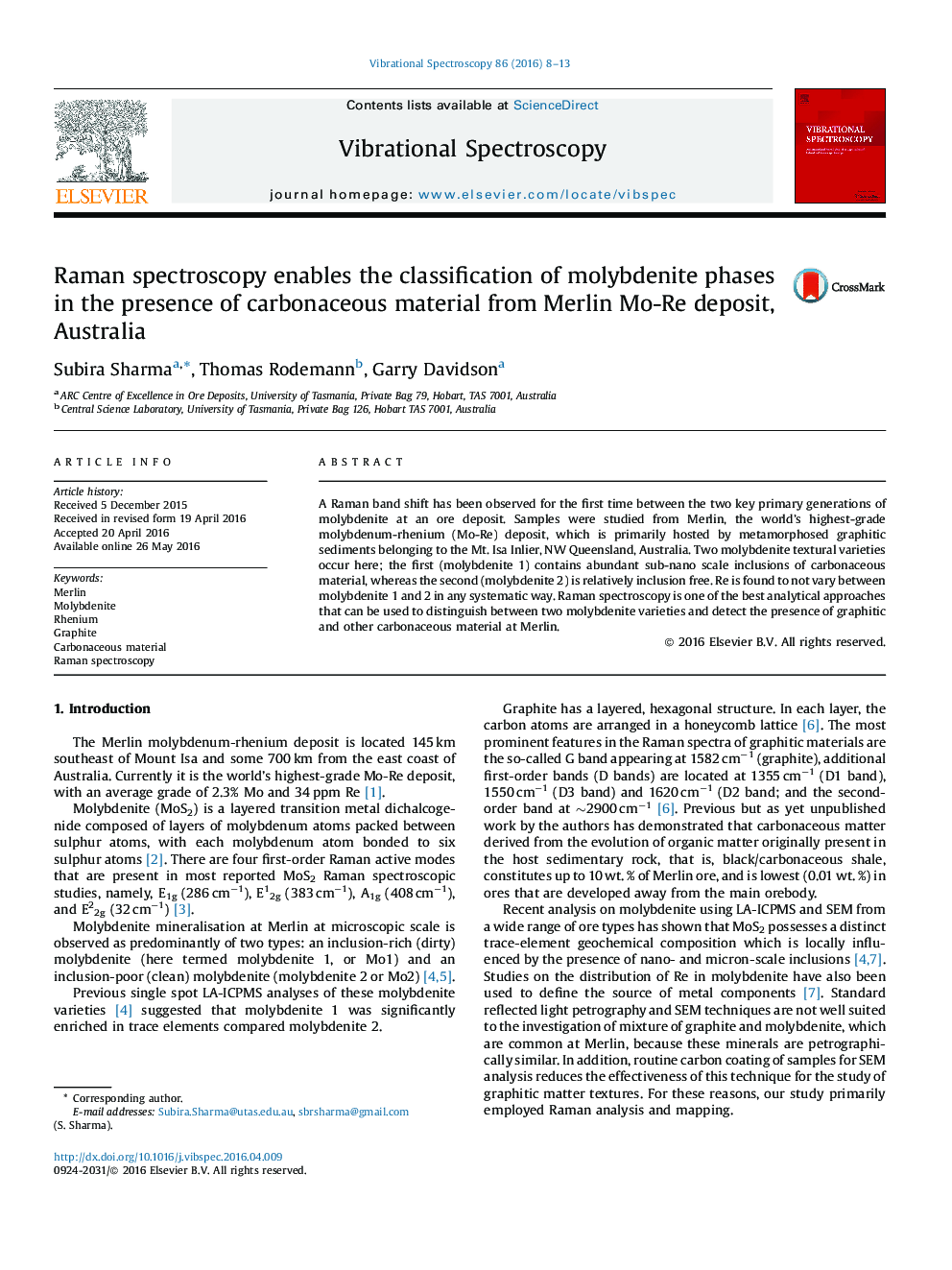| Article ID | Journal | Published Year | Pages | File Type |
|---|---|---|---|---|
| 1249496 | Vibrational Spectroscopy | 2016 | 6 Pages |
A Raman band shift has been observed for the first time between the two key primary generations of molybdenite at an ore deposit. Samples were studied from Merlin, the world’s highest-grade molybdenum-rhenium (Mo-Re) deposit, which is primarily hosted by metamorphosed graphitic sediments belonging to the Mt. Isa Inlier, NW Queensland, Australia. Two molybdenite textural varieties occur here; the first (molybdenite 1) contains abundant sub-nano scale inclusions of carbonaceous material, whereas the second (molybdenite 2) is relatively inclusion free. Re is found to not vary between molybdenite 1 and 2 in any systematic way. Raman spectroscopy is one of the best analytical approaches that can be used to distinguish between two molybdenite varieties and detect the presence of graphitic and other carbonaceous material at Merlin.
